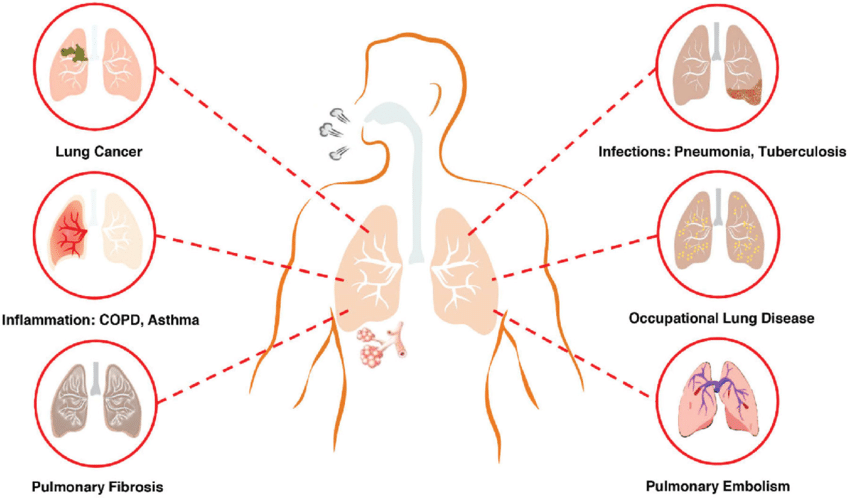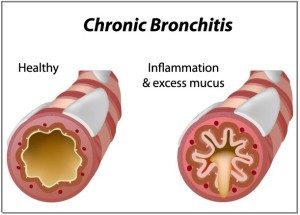Respiratory System Disorder Study Guide
Introduction
A respiratory system disorder refers to a disease in which respiratory organs are affected, causing an organism or human discomfort while breathing. Respiratory system disorders can be differentiated into two groups based on the nature of their symptoms: acute and chronic disease.
Acute respiratory infections include sinusitis, the common cold, rhinitis, epiglottitis, laryngitis, etc. Chronic respiratory diseases include lung cancer, COPD (chronic obstructive pulmonary disease), sleep apnea, cystic fibrosis, and occupational lung diseases.
Respiratory System Disorders
Some of the major respiratory disorders are as follows: asthma, chronic obstructive pulmonary disease (COPD), emphysema, chronic bronchitis, and mesothelioma. Let’s go over them below.
Asthma
Asthma is a chronic respiratory disease that affects your lungs and airways, making it difficult to breathe. During an asthma attack, your airway narrows, the muscles surrounding it tighten, and your lungs fill with mucus. There is no cure for asthma, but you can live a long and healthy life with proper treatment.
To control asthma, you should follow your physician’s instructions. Proper medication and physical fitness should be a priority for such patients.
Because the air that you breathe plays a vital role in triggering asthma, patients with the disorder should try to live in an allergen and smoke free environment to improve their air quality. A person with asthma should keep away from cold air, fog, smog, wood smoke, smoking, scents, anxiety, emotional upsets, etc.
Dry fruits, red wine, and food with large amounts of chemicals and sulfites should be avoided. Proper dieting and eating a variety of food groups are recommended to keep your body and respiratory system healthy.
COPD (Chronic Obstructive Pulmonary Disease)
Chronic Obstructive Pulmonary Disease is a long-term disorder involving a group of diseases that block your airways and cause other breathing-related problems. COPD worsens over time and is considered incurable due to the nature of the illness. It primarily affects the respiratory tract, causing the lungs to swell and breathing to become difficult. COPD can include both emphysema and chronic bronchitis, two diseases that we’ll cover below.
Emphysema
In those with Emphysema, the alveoli, tiny air-filled sacs found in the tissues of the lungs, are damaged. The alveoli are the site at which gas exchange occurs during respiration. Damage to the alveoli reduces the surface area available to absorb oxygen and release CO2, affecting the lungs’ ability to supply air.
Emphysema usually goes undetected, with its main symptom being shortness of breath. It can affect your ability to do daily activities, like climbing stairs or walking uphill, and can cause brain fog and discoloration in the lips and fingernails with exertion.
Chronic Bronchitis
Chronic Bronchitis refers to the long-term inflammation of the bronchi in the respiratory tract that causes your airways to fill with mucus. The small hairs that would usually move this mucus out of your lungs cannot do so due to damage, making you cough and feel short of breath.
Those with COPD are also more susceptible to acute bronchitis, episodes in which you experience the same symptoms as chronic bronchitis but to a higher degree of severity. Emphysema and chronic bronchitis disease are interrelated due to their likeness in symptoms.
Chronic bronchitis is linked to smoking, with over 90% of COPD cases occuring in people who currently or used to smoke tobacco. See the diagram below to compare a healthy airway to one affected by chronic bronchitis.
Mesothelioma
Mesothelioma is a form of cancer that affects the mesothelium, the membrane that lines your chest cavity. Usually by the time the disease is identified, it has become so advanced that the 5-year survival rate hovers somewhere between 5 and 10 percent.
It is caused by the inhilation of asbestos fibers, a type of mineral that was widely used in a variety of building materials until 1970 when it was classified as a pollutant and banned from use. Symptoms of mesothelioma include severe chest pain, weight loss, fatigue, fever, and shortness of breath.
Chest pain may be caused by the spread of the disease to involve the pleura, the membrane that envelop the lungs. Severe, intractable pain caused by such conditions may require surgery to cut the nerves that supply the affected segment.
Conclusion
-
We should always try to keep our body fit and healthy irrespective of age and prevent diseases.
-
To keep our respiratory system healthy, we should follow rules and guides about things to keep away from us.
-
We should exercise more frequently, avoid smoking, minimize exposure to outdoor smoke (wood, dust, chemicals), and prevent infection by getting regular check-ups.
FAQs
1. What are the five most common respiratory diseases in the world?
- Tuberculosis
- Asthma
- Lung cancer
- Respiratory tract infection
- Pneumonia
2. What are some common symptoms of respiratory diseases?
Symptoms may include shortness of breath, chest pain, excess mucus production in the lungs, swelling in the airways, and coughing (among others).
3. How can I keep my respiratory system healthy?
- Avoid smoking
- Maintain a clean house free of dust and allergens
- Wear a mask
- Avoid exposure to outdoor smoke
- Avoid active and passive smoking
- Frequent check-ups
- Exercising daily
4. What are some examples of diseases of the respiratory system?
- Asthma
- Tuberculosis
- Pulmonary hypertension
- Lung cancer
- Mesothelioma
- Cystic Fibrosis
- Emphysema
- Pneumonia
- Pleural effusion
- Chronic bronchitis.
5. What is the most common lung infection?
Pneumonia is considered to be the most common lung infection. It causes inflammation in the lungs. Bacteria, fungi, and viruses can all cause pneumonia.
We hope you enjoyed studying this lesson and learned something cool about Respiratory System Disorders! Join our Discord community to get any questions you may have answered and to engage with other students just like you! Don’t forget to download our App to experience our fun, VR classrooms – we promise, it makes studying much more fun! 😎
Sources
-
Respiratory disease. https://www.britannica.com/science/respiratory-disease. Accessed Nov 26, 2021.
-
Respiratory System Disorders. https://flexbooks.ck12.org/cbook/ck-12-biology-flexbook-2.0/section/13.33/primary/lesson/respiratory-system-diseases-bio/. Accessed Nov 26, 2021.
-
Respiratory Disorders. https://utswmed.org/conditions-treatments/respiratory-disorders/. Accessed Nov 26, 2021.
-
Lung Diseases Overview. https://www.webmd.com/lung/lung-diseases-overview. Accessed Nov 26, 2021.


